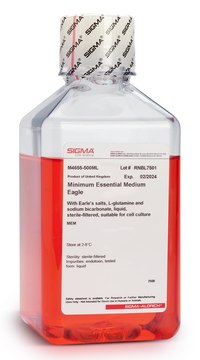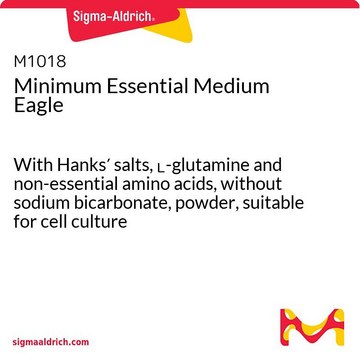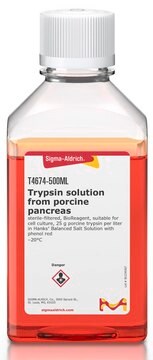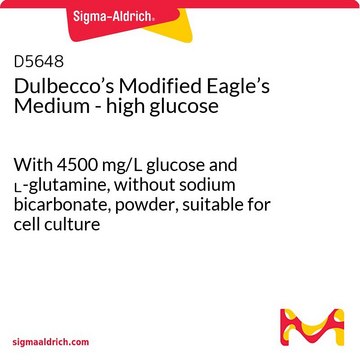M4642
Minimum Essential Medium Eagle
With Hanks′ salts and ʟ-glutamine, without sodium bicarbonate, powder, suitable for cell culture
Synonym(s):
EMEM, MEM
About This Item
Recommended Products
Product Name
Minimum Essential Medium Eagle, With Hanks′ salts and L-glutamine, without sodium bicarbonate, powder, suitable for cell culture
form
powder
technique(s)
cell culture | mammalian: suitable
components
glucose: yes
Hanks’ salts (2% CO2): yes
L-glutamine: yes
Earle’s salts (5% CO2): no
NaHCO3: no
phenol red: yes
sodium pyruvate: no
stable glutamine: no
HEPES: no
shipped in
ambient
storage temp.
2-8°C
Looking for similar products? Visit Product Comparison Guide
General description
Application
- as a component of the Hank′s MEM (HMEM)-Pipes buffer to induce anaphylatoxin induced-ear swelling in mice
- as a component of the slice culture medium (SCM) for the incubation of mouse hippocampal slice cultures
- to culture Müller cells from guinea pigs
Quantity
Reconstitution
also commonly purchased with this product
Storage Class Code
11 - Combustible Solids
WGK
WGK 1
Choose from one of the most recent versions:
Already Own This Product?
Find documentation for the products that you have recently purchased in the Document Library.
Customers Also Viewed
Our team of scientists has experience in all areas of research including Life Science, Material Science, Chemical Synthesis, Chromatography, Analytical and many others.
Contact Technical Service




